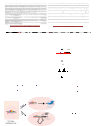Identification of functionally active, low frequency copy number variants at 15q21.3 and 12q21.31 associated with prostate cancer risk
- PMID: 22496589
- PMCID: PMC3340033
- DOI: 10.1073/pnas.1117405109
Identification of functionally active, low frequency copy number variants at 15q21.3 and 12q21.31 associated with prostate cancer risk
Abstract
Copy number variants (CNVs) are a recently recognized class of human germ line polymorphisms and are associated with a variety of human diseases, including cancer. Because of the strong genetic influence on prostate cancer, we sought to identify functionally active CNVs associated with susceptibility of this cancer type. We queried low-frequency biallelic CNVs from 1,903 men of Caucasian origin enrolled in the Tyrol Prostate Specific Antigen Screening Cohort and discovered two CNVs strongly associated with prostate cancer risk. The first risk locus (P = 7.7 × 10(-4), odds ratio = 2.78) maps to 15q21.3 and overlaps a noncoding enhancer element that contains multiple activator protein 1 (AP-1) transcription factor binding sites. Chromosome conformation capture (Hi-C) data suggested direct cis-interactions with distant genes. The second risk locus (P = 2.6 × 10(-3), odds ratio = 4.8) maps to the α-1,3-mannosyl-glycoprotein 4-β-N-acetylglucosaminyltransferase C (MGAT4C) gene on 12q21.31. In vitro cell-line assays found this gene to significantly modulate cell proliferation and migration in both benign and cancer prostate cells. Furthermore, MGAT4C was significantly overexpressed in metastatic versus localized prostate cancer. These two risk associations were replicated in an independent PSA-screened cohort of 800 men (15q21.3, combined P = 0.006; 12q21.31, combined P = 0.026). These findings establish noncoding and coding germ line CNVs as significant risk factors for prostate cancer susceptibility and implicate their role in disease development and progression.
Conflict of interest statement
The authors declare no conflict of interest.
Figures



References
-
- Ferlay J, et al. Estimates of worldwide burden of cancer in 2008: GLOBOCAN 2008. Int J Cancer. 2010;127:2893–2917. - PubMed
-
- Lichtenstein P, et al. Environmental and heritable factors in the causation of cancer—Analyses of cohorts of twins from Sweden, Denmark, and Finland. N Engl J Med. 2000;343:78–85. - PubMed
-
- Iafrate AJ, et al. Detection of large-scale variation in the human genome. Nat Genet. 2004;36:949–951. - PubMed
-
- Sebat J, et al. Large-scale copy number polymorphism in the human genome. Science. 2004;305:525–528. - PubMed
Publication types
MeSH terms
Grants and funding
LinkOut - more resources
Full Text Sources
Medical
Molecular Biology Databases
Research Materials
Miscellaneous

